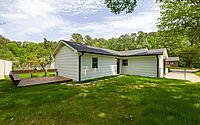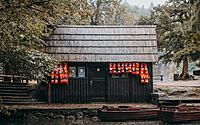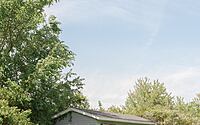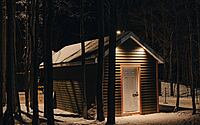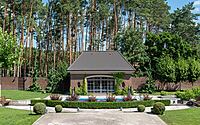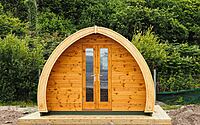How Many Sheds Can I Have on My Property?
Have you ever wondered how many sheds you can have on your property? Well, you’re in luck!
This article will provide you with all the information you need to know about local zoning laws, shed size and dimensions, setbacks and distance requirements, total square footage allowances, as well as permits and building codes.
So, if you’re looking to add some extra storage space to your property, keep reading to find out just how many sheds you can have!
Key Takeaways
- Familiarize yourself with local zoning laws and shed regulations
- Determine the number of sheds allowed on your property
- Adhere to setbacks and distance requirements
Local Zoning Laws
You need to familiarize yourself with your local zoning laws to determine how many sheds you can have on your property.
Local zoning laws, also known as shed regulations or shed codes, are guidelines set by your municipality to ensure the proper usage and development of land within your area. These laws dictate the number of sheds you’re allowed to have on your property and outline any shed restrictions that may be in place.
If you wondered, do I need a building permit for a shed, some areas may require shed permits or have specific shed laws that you need to adhere to. By understanding and following these regulations, you can avoid potential fines or penalties and ensure that you’re in compliance with your local zoning laws.
How many sheds can I have on my property?
The number of sheds you can have on your property depends on the regulations set by your local municipality. Some areas may have specific restrictions on the number of sheds allowed, while others may not have any limitations. For example:
- In California, you are allowed to build two tool and storage sheds, not bigger than 120 square feet of floor area.
- In Florida, if you live in a rural county, you can build as many sheds as you want. (PDF)
- In Michigan, only one shed greater than 200 square feet is allowed per residential lot and you will need a permit. (lansingmi.gov)
It’s important to consult your local building department or zoning office to determine the regulations for sheds in your area.
Shed Size and Dimensions
Consider the size and dimensions of your shed when determining how many you can have on your property. Each shed must meet specific size and dimension requirements to ensure compliance with these regulations. These requirements may include limitations on the overall footprint, maximum height, design and setback distances from property lines.
Does the size of the shed affect the number of sheds I can have?
Yes, the size of the shed can affect the number of sheds you can have on your property. Some municipalities have restrictions on the total square footage of accessory structures, including sheds, that can be built on a property. If the size of your shed exceeds the maximum allowable square footage, it may limit the number of sheds you can have.
Setbacks and Distance Requirements to Build a Shed
When determining how many sheds you can have on your property, it’s crucial to adhere to setbacks and distance requirements imposed by your local authorities. These regulations are in place to ensure safety, maintain the aesthetic appearance of the neighborhood, and prevent any potential conflicts with neighboring properties.
To help you understand the importance of setbacks and distance requirements, here are four key factors to consider:
- Shed setbacks: Local authorities may have specific guidelines regarding the distance that sheds must be set back from property lines or other structures.
- Shed zoning: Different zones within your area may have varying regulations regarding the number and size of sheds allowed on a property.
- Shed easements: Easements, such as utility easements for plumbing and wiring, may restrict the placement of sheds and other structures to ensure access for maintenance or repairs.
- Shed covenants: If you live in a neighborhood with a homeowners’ association, there may be specific covenants or restrictions regarding garden sheds and their appearance.
Total Square Footage Allowances
Total square footage allowances for sheds on your property depend on local zoning regulations and any specific restrictions imposed by your homeowners’ association or local authorities. These regulations and restrictions typically cover factors such as:
- shed types
- shed construction
- shed materials
- shed sizes
- shed zoning
Local zoning regulations may specify the maximum square footage allowed for sheds, which can vary depending on the size of your property and its designated use. Similarly, homeowners’ associations may have their own set of rules and limitations regarding shed sizes and materials.
It’s important to consult these regulations and restrictions before constructing or purchasing a shed to ensure compliance and avoid any potential fines or penalties.
Permits and Regulations for Constructing Sheds
To obtain the necessary permits and comply with building codes for constructing sheds on your property, you’ll need to adhere to local regulations and guidelines. Here are four key things to consider:
- Shed Permits: Check with your local government or building department to determine if a permit is required for your shed project. Some areas may have specific requirements for sheds over a certain size or if they’re intended for living or storage purposes.
- Shed Building Codes: Familiarize yourself with the building codes that apply to shed construction in your area. These codes may dictate the materials, dimensions, and structural requirements for your shed. Additionally, having a detailed Site Plan for Shed Install is often necessary for obtaining permits.
- Shed Contractors: Consider hiring a professional shed contractor who’s knowledgeable about local building codes. They can help ensure that your shed is constructed properly and in compliance with regulations.
- Shed Manufacturers and Suppliers: Consult reputable shed manufacturers and suppliers who can provide pre-fabricated sheds that meet local building code requirements. This can save you time and effort in the planning and construction process.
Conclusion
So, in conclusion, when it comes to how many sheds you can have on your property, it all depends on:
- Your local zoning laws
- Shed size and dimensions
- Setbacks and distance requirements
- Total square footage allowances
It’s important to also consider permits and building codes to ensure compliance with regulations. Make sure to check with your local authorities to understand the specific rules and regulations for sheds on your property.
Number of backyard sheds on my property FAQs
Q: Can I have a shed in my backyard?
A: Yes, you can have a shed in your backyard, but the regulations may vary depending on your local municipality. It’s important to check with your local building department or zoning office to ensure that your shed complies with any setback requirements or other regulations that may be in place.
Q: Do I need a building permit to build a shed?
A: In many cases, you will need a building permit to construct a shed on your property. The requirements for obtaining a building permit may vary by location, so it’s important to check with your local building department or zoning office to determine the specific regulations and permit requirements for building a shed.
Q: Can I use a shed as an office or workspace?
A: Yes, sheds can be used as offices or workspaces, but there may be additional requirements and regulations to consider. Depending on your municipality, you may need to obtain the necessary permits and meet specific building code requirements for using a shed as a workspace. It’s important to consult with your local building department or zoning office for guidance.
Q: What foundation should I use for my shed?
A: The type of foundation you should use for your shed depends on various factors, such as the size of the shed, local regulations, and personal preference. Common shed foundations include concrete slabs, gravel pads, and treated wood skids. It’s important to consult with a professional or your local building department to determine the most suitable foundation for your shed.
- by Matt Watts
